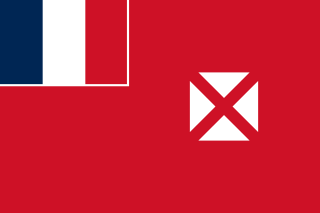
Wallis and Futuna, officially the Territory of the Wallis and Futuna Islands, is a French island collectivity in the South Pacific, situated between Tuvalu to the northwest, Fiji to the southwest, Tonga to the southeast, Samoa to the east, and Tokelau to the northeast.
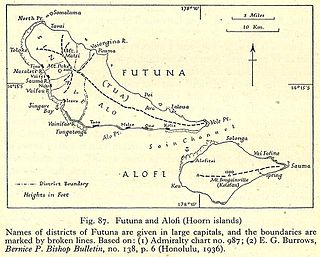
Futuna is the largest island in Hoorn Islands or Îles Horne, located in the Pacific Ocean, part of the French overseas collectivity of Wallis and Futuna. The island occupies an area of 80 km2 (30 sq mi) and as of 2018 it has a population of 10,912.

Wallis is a Polynesian atoll/island in the Pacific Ocean belonging to the French overseas collectivity of Wallis and Futuna. It lies north of Tonga, northeast of Fiji, east-northeast of the Hoorn Islands, east of Fiji's Rotuma, southeast of Tuvalu, southwest of Tokelau and west of Samoa. Its area is almost 100 km2 (39 sq mi) with 8,333 people. Its capital is Mata Utu. Roman Catholicism is the predominant religion. Its highest point is Mount Lulu Fakahega. Wallis is of volcanic origin with fertile soil and some remaining lakes. Rainfall is plentiful.

Alofi is an uninhabited island in the Pacific Ocean belonging to the French overseas collectivity of Wallis and Futuna. Data shows that Alofi was inhabited until 1840. The highest point on the island is Kolofau. The 3,500 ha island is separated from the larger neighbouring island of Futuna by a 1.7 km channel. Alofi has been recognised as an Important Bird Area (IBA) by BirdLife International for its red-footed booby colony and the vulnerable shy ground dove, as well as for various restricted-range bird species.

UTC+12:00 is an identifier for a time offset from UTC of +12:00.
Wallisian, or ʻUvean, is the Polynesian language spoken on Wallis Island. The language is also known as East Uvean to distinguish it from the related West Uvean language spoken on the outlier island of Ouvéa near New Caledonia. The latter island was colonised from Wallis Island in the 18th century.

The Wallis and Futuna national football team is the national soccer team of Wallis and Futuna. Wallis and Futuna is not a member of FIFA and, therefore, is not eligible to enter either the FIFA World Cup or the OFC Nations Cup, and due to the low investment in sport on the part of the country, it has been many years since it played an international match.

The following outline is provided as an overview of and topical guide to Wallis and Futuna:

Oceania Rugby, previously known as the Federation of Oceania Rugby Unions (FORU), is the regional governing body for rugby union in Oceania. It was founded in 2000 to represent the interests of Oceania rugby within World Rugby, the international governing body. It presently encompasses fourteen full members and two associate members.
The Fiji–France Maritime Delimitation Agreement is a 1983 treaty between France and Fiji which establishes the maritime boundary between Fiji and the French special collectivity of New Caledonia and the boundary between Fiji and the French overseas collectivity of Wallis and Futuna.
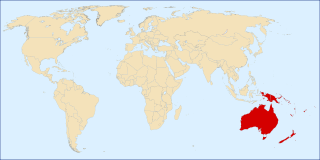
The following outline is provided as an overview and topical guide to Oceania.

The Catholic Church in Wallis and Futuna is part of the worldwide Catholic Church, which, inspired by the life, death and teachings of Jesus Christ, and under the spiritual leadership of the Pope and Roman curia in the Vatican City is the largest Christian church in the world. The French who were the first Europeans to settle in the territory, with the arrival of missionaries in 1837, who converted the population to Catholicism. Today, the population of the Pacific island French territory is overwhelmingly Catholic. Bishop Ghislain Marie Raoul Suzanne de Rasilly, S.M., was ordained Bishop of Wallis et Futuna in 2005.
The Wallis and Futuna national rugby sevens team is a minor national team that competes in the Pacific Games and in regional tournaments.
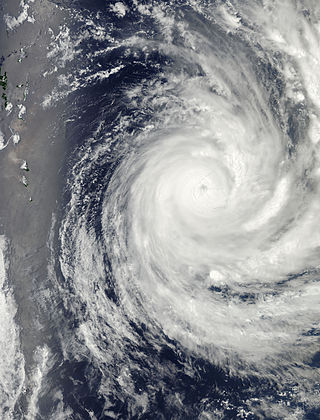
Severe Tropical Cyclone Evan was considered to be the worst tropical cyclone to affect the island nation of Samoa since Cyclone Val in 1991 and was the strongest storm to impact the main South Pacific islands until Winston in 2016. The system was first noted on December 9, 2012, as a weak tropical depression about 700 km (435 mi) to the northeast of Suva, Fiji. Over the next couple of days, the depression gradually developed further before it was named Evan on December 12, as it had fully developed into a tropical cyclone. During that day the system moved toward the Samoan Islands and gradually intensified, before the system slowed and severely affected the Samoan Islands during the next day with wind gusts of up to 210 km/h (130 mph).
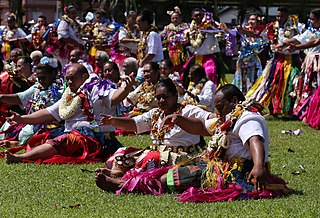
Wallis and Futuna, an overseas territory of France in Oceania, has a rich Polynesian culture that is very similar to the cultures of its neighbouring nations Samoa and Tonga. The Wallisian and Futunan cultures share very similar components in language, dance, cuisine and modes of celebration.
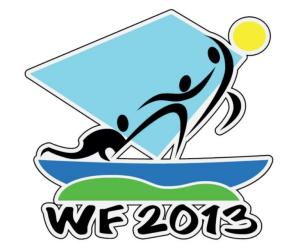
The 2013 Pacific Mini Games was the ninth edition of these Mini Games. They were held in Mata Utu in Wallis and Futuna from 2 to 12 September 2013. It was the first time the games had been held in Wallis and Futuna.
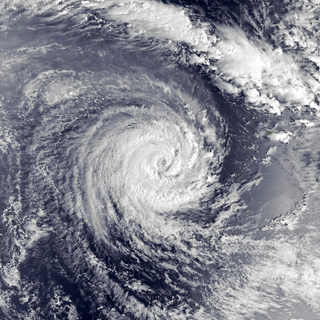
Severe Tropical Cyclone Raja was a tropical cyclone that holds the 24-hour rainfall record of 674.9 mm (26.57 in) for the French Overseas Territory of Wallis and Futuna. The system was first noted by the Fiji Meteorological Service (FMS) as a weak tropical disturbance northeast of Tokelau in mid-December 1986. The system developed further as it moved southwest over the next few days, and it was classified as Tropical Cyclone Raja on 23 December. The newly named system slowed and unexpectedly recurved southeast towards the French territory of Wallis and Futuna on 24 December. Over the next two days, Raja interacted with what would become Severe Cyclone Sally and executed a tight loop, passing within 55 km (35 mi) of Futuna. The system peaked as a Category 3 severe tropical cyclone on 28 December, with estimated 10-minute sustained winds of 90 mph (150 km/h). The storm turned southwest the next day and threatened Fiji, where it passed within 20 km (10 mi) of Vanua Levu and near several smaller islands in the Lau group during the following day. Raja gradually weakened over the next few days as it moved south of Fiji; it was last noted on 5 January 1987 after it filled up over the north Tasman Sea.

Severe Tropical Cyclone Amos was a strong tropical cyclone that affected the Fijian and Samoan Islands as well as Wallis and Futuna. Amos was first noted as Tropical Disturbance 17F during April 13, 2016 to the northwest of Fiji. The system subsequently moved south-eastwards towards the Fijian Islands, before it passed near or over Vanua Levu during April 16. After passing over Fiji, the system gradually developed further as it moved north-eastwards towards the Samoan Islands. The system was subsequently named Amos during April 20, after it had developed into a tropical cyclone and started to move north-westwards towards the island nation of Tuvalu.













